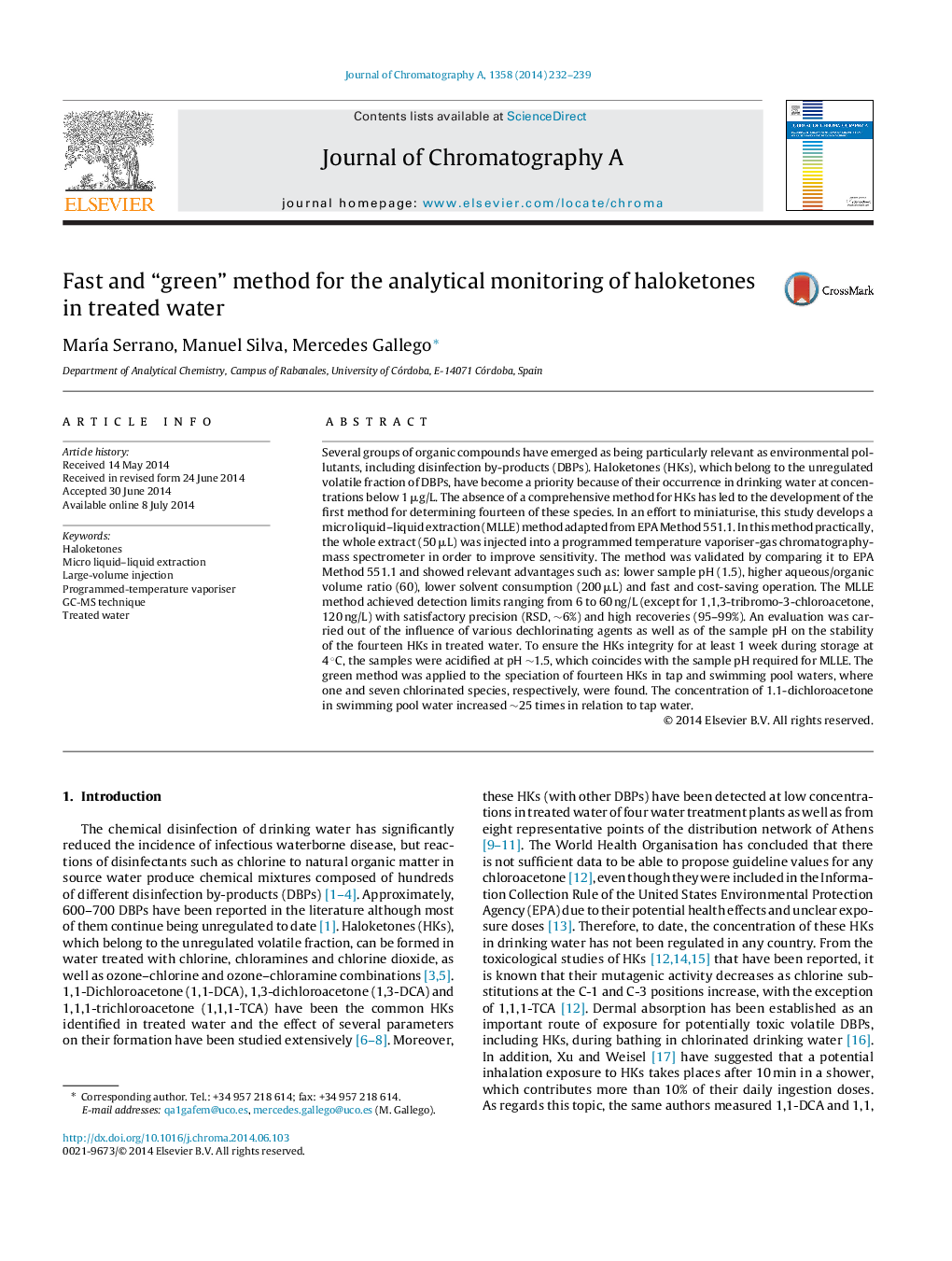| کد مقاله | کد نشریه | سال انتشار | مقاله انگلیسی | نسخه تمام متن |
|---|---|---|---|---|
| 7612777 | 1493568 | 2014 | 8 صفحه PDF | دانلود رایگان |
عنوان انگلیسی مقاله ISI
Fast and “green” method for the analytical monitoring of haloketones in treated water
ترجمه فارسی عنوان
سریع و سبز ؟؟ روش برای نظارت تحلیلی از هالوکوتون ها در آب درمان شده
دانلود مقاله + سفارش ترجمه
دانلود مقاله ISI انگلیسی
رایگان برای ایرانیان
کلمات کلیدی
موضوعات مرتبط
مهندسی و علوم پایه
شیمی
شیمی آنالیزی یا شیمی تجزیه
چکیده انگلیسی
Several groups of organic compounds have emerged as being particularly relevant as environmental pollutants, including disinfection by-products (DBPs). Haloketones (HKs), which belong to the unregulated volatile fraction of DBPs, have become a priority because of their occurrence in drinking water at concentrations below 1 μg/L. The absence of a comprehensive method for HKs has led to the development of the first method for determining fourteen of these species. In an effort to miniaturise, this study develops a micro liquid-liquid extraction (MLLE) method adapted from EPA Method 551.1. In this method practically, the whole extract (50 μL) was injected into a programmed temperature vaporiser-gas chromatography-mass spectrometer in order to improve sensitivity. The method was validated by comparing it to EPA Method 551.1 and showed relevant advantages such as: lower sample pH (1.5), higher aqueous/organic volume ratio (60), lower solvent consumption (200 μL) and fast and cost-saving operation. The MLLE method achieved detection limits ranging from 6 to 60 ng/L (except for 1,1,3-tribromo-3-chloroacetone, 120 ng/L) with satisfactory precision (RSD, â¼6%) and high recoveries (95-99%). An evaluation was carried out of the influence of various dechlorinating agents as well as of the sample pH on the stability of the fourteen HKs in treated water. To ensure the HKs integrity for at least 1 week during storage at 4 °C, the samples were acidified at pH â¼1.5, which coincides with the sample pH required for MLLE. The green method was applied to the speciation of fourteen HKs in tap and swimming pool waters, where one and seven chlorinated species, respectively, were found. The concentration of 1.1-dichloroacetone in swimming pool water increased â¼25 times in relation to tap water.
ناشر
Database: Elsevier - ScienceDirect (ساینس دایرکت)
Journal: Journal of Chromatography A - Volume 1358, 5 September 2014, Pages 232-239
Journal: Journal of Chromatography A - Volume 1358, 5 September 2014, Pages 232-239
نویسندگان
MarÃa Serrano, Manuel Silva, Mercedes Gallego,
